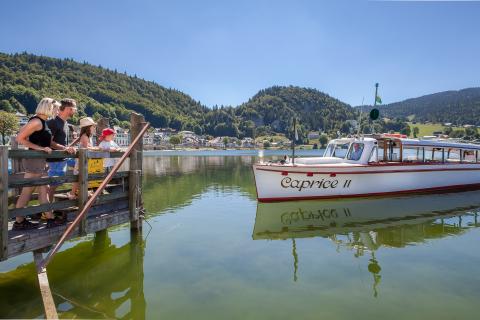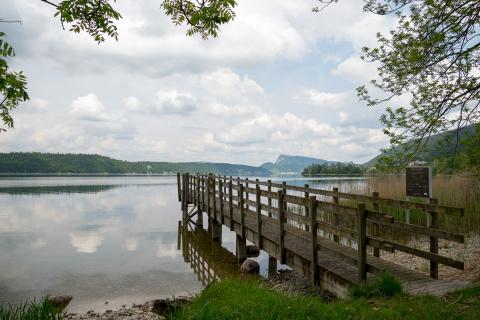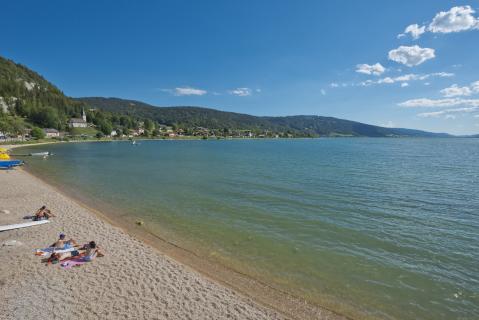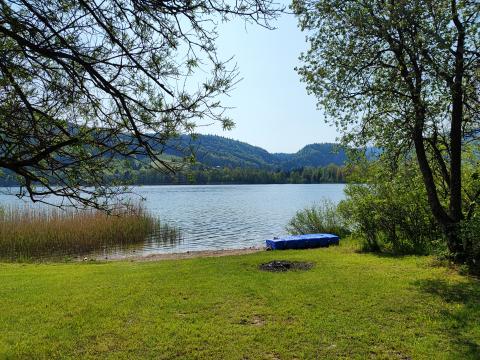
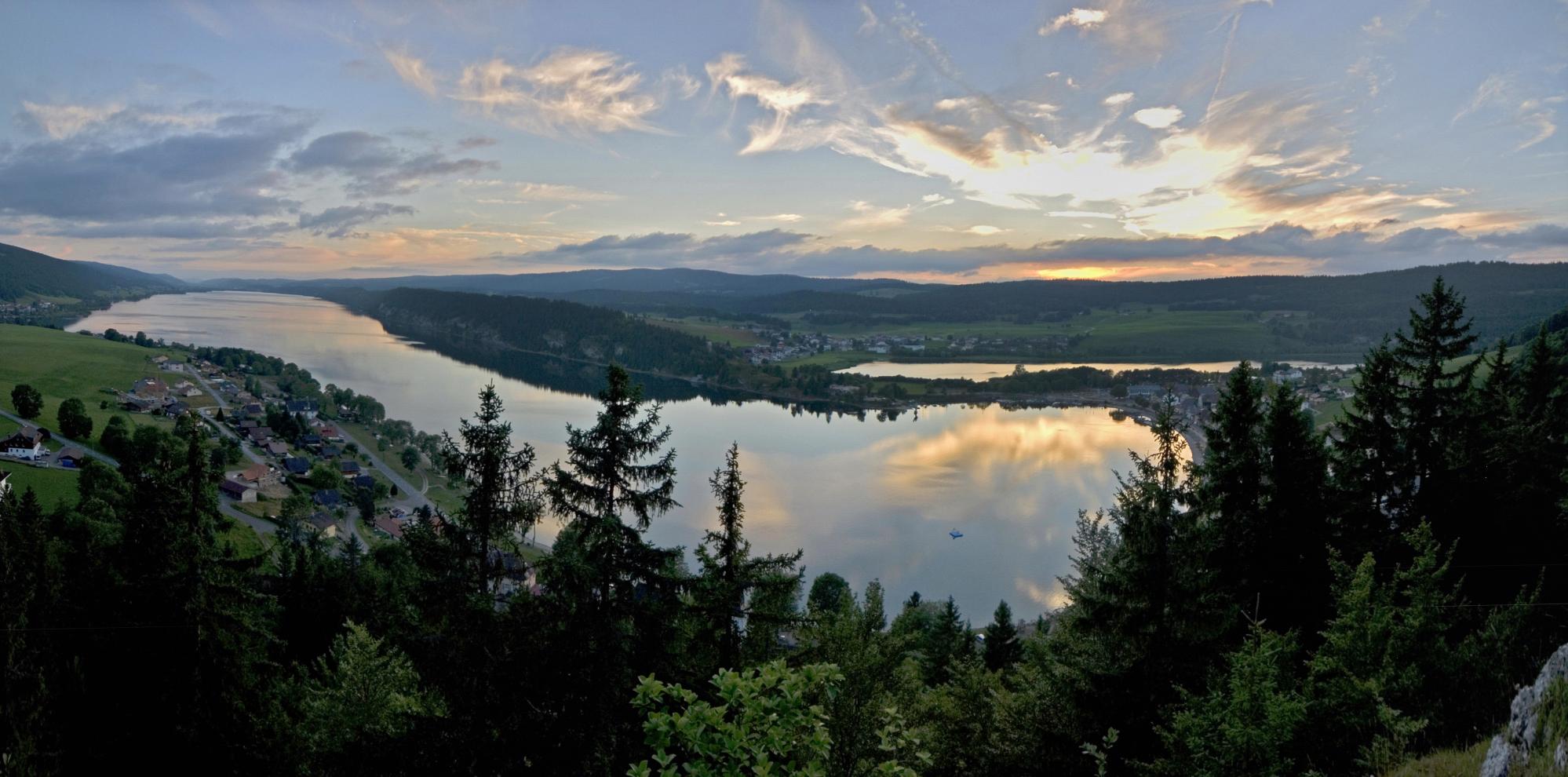
Claude Jaccard
Lakes of the Vallée de Joux
Three lakes, three atmospheres: the Vallée de Joux can be discovered along the water, from the shore or on the waves.
The Vallée de Joux is often associated with the hilly landforms of the Jura, but it is also a land of water. The latter one flows in several streams and rivers and forms three lakes. The Lac de Joux and Brenet are located in the main valley, while the small Lac Ter is in the upper valley.
The lakes of the Vallée de Joux of course influence the geology and the climate since immemorial time. They are also an economic source for the residents, who, by the end of the 19th century, exploited their ice. Fishing is also a resource, especially in Lac de Joux, where fish were introduced artificially by monks in the middle ages.
Finally, the three lakes played - and still play - an important role in the development of tourism. They attract visitors with their beauty, the walking paths that make it possible to visit during bucolic hikes, and due to activities practiced on waters and even on ice of Lac de Joux in winter.
The lakes of the Vallée de Joux of course influence the geology and the climate since immemorial time. They are also an economic source for the residents, who, by the end of the 19th century, exploited their ice. Fishing is also a resource, especially in Lac de Joux, where fish were introduced artificially by monks in the middle ages.
Finally, the three lakes played - and still play - an important role in the development of tourism. They attract visitors with their beauty, the walking paths that make it possible to visit during bucolic hikes, and due to activities practiced on waters and even on ice of Lac de Joux in winter.
Live info
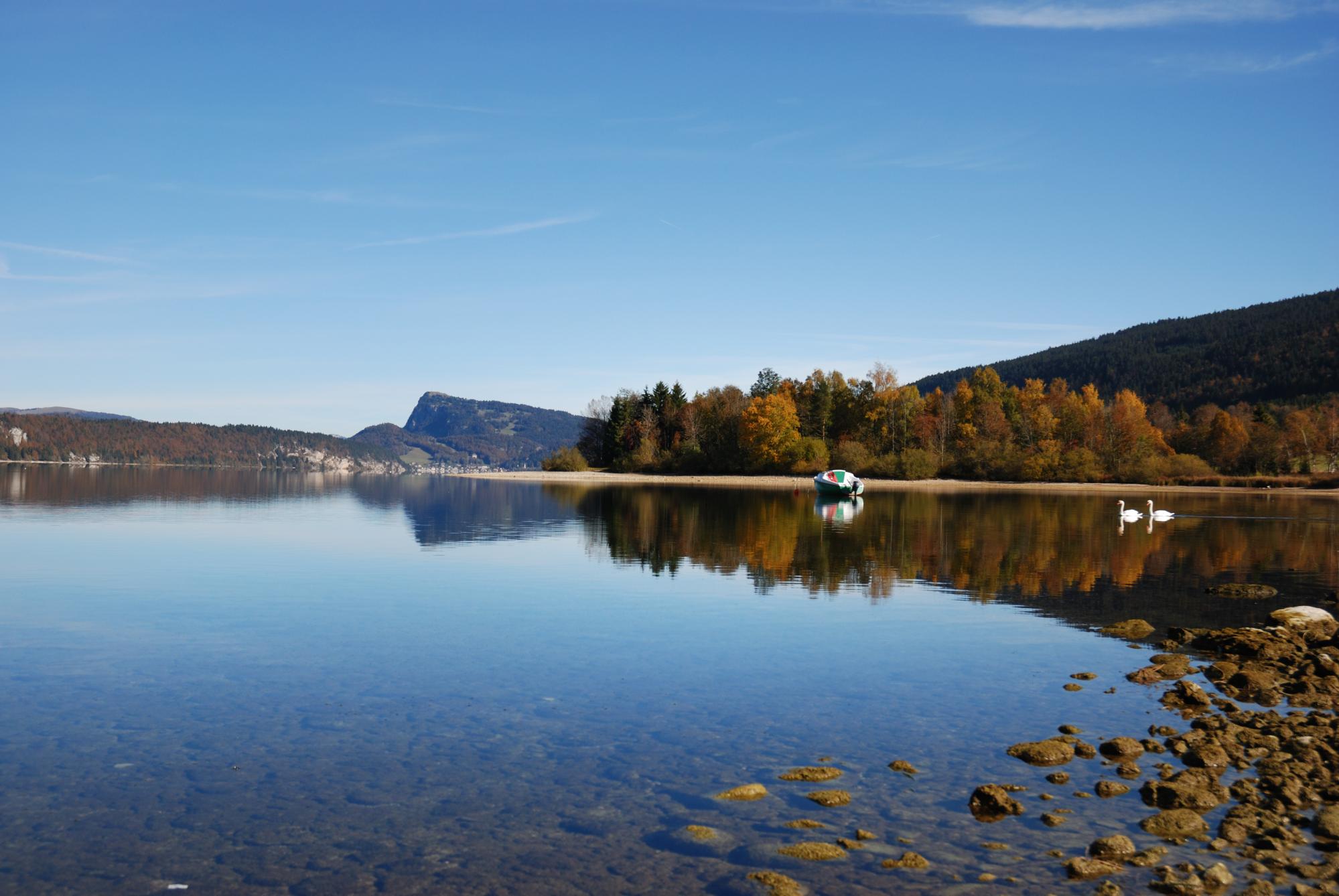
Claude Jaccard
Lac de Joux
Lake Joux is a very popular destination with nature lovers. The lakeshore villages offer a whole range of restaurants, hotels and activities in winter and summer.
The largest body of water in the Jura mountain range, Lake Joux is a paradise for open air activities. In the summer, given the altitude (1,004 m), visitors can enjoy the cool mountain air and the water is the ideal temperature for swimming (up to 24 degrees). For sports enthusiasts, the favourable currents make this a favourite spot for wind surfing and there’s also sailing, biking and hiking for families and groups of friends to enjoy together.
In winter, when the conditions are right, the lake freezes completely to form the biggest natural skating rink in Switzerland and Europe. Adults and children can then cross the lake on foot or don their skates and glide across. Equipment is available for hire in Le Sentier or Le Pont during the busy period. Check the tourist office website on the day to find out whether the lake is open for enjoyment.
The largest body of water in the Jura mountain range, Lake Joux is a paradise for open air activities. In the summer, given the altitude (1,004 m), visitors can enjoy the cool mountain air and the water is the ideal temperature for swimming (up to 24 degrees). For sports enthusiasts, the favourable currents make this a favourite spot for wind surfing and there’s also sailing, biking and hiking for families and groups of friends to enjoy together.
In winter, when the conditions are right, the lake freezes completely to form the biggest natural skating rink in Switzerland and Europe. Adults and children can then cross the lake on foot or don their skates and glide across. Equipment is available for hire in Le Sentier or Le Pont during the busy period. Check the tourist office website on the day to find out whether the lake is open for enjoyment.
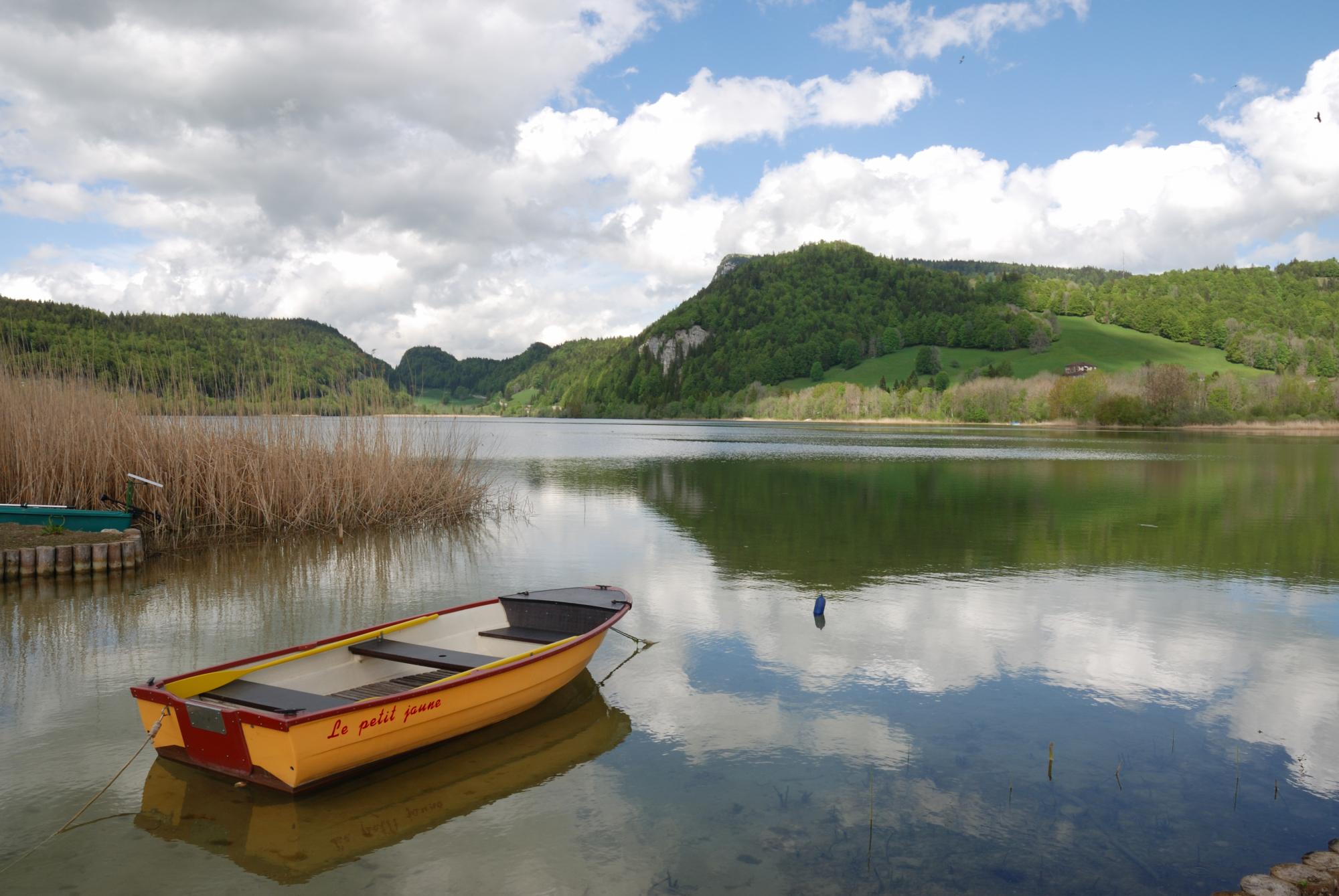
Claude Jaccard
Lac Brenet
200 m northeast of Lac de Joux, Lac Brenet is a small jewel, with its 1.5 km length, 500 m wide. We go around in about an hour, ideal for a Sunday walk! Its small shaded beaches are also appreciated by swimmers.
Like its vast neighbor, Lac Brenet completely freezes in winter, it is forbidden to walk or skate on this lake on the contrary of Lac de Joux which allows both activities. Its ice has had various uses in the past, as shown by one of the 16th explanatory panels installed on its shores, tracing the human activities around Lac Brenet.
The famous natural ice of the Lac Brenet was in fact exploited by ice makers during sixty years. Since 1879, the horses' chariots have transported the blocks of ice to Croy station, where the large ice cubes are loaded on trains destined for the large Swiss cities, but especially for Paris. Finally, the line of railway came into being between Le Pont and Vallorbe, in order to facilitate transportation.
Like its vast neighbor, Lac Brenet completely freezes in winter, it is forbidden to walk or skate on this lake on the contrary of Lac de Joux which allows both activities. Its ice has had various uses in the past, as shown by one of the 16th explanatory panels installed on its shores, tracing the human activities around Lac Brenet.
The famous natural ice of the Lac Brenet was in fact exploited by ice makers during sixty years. Since 1879, the horses' chariots have transported the blocks of ice to Croy station, where the large ice cubes are loaded on trains destined for the large Swiss cities, but especially for Paris. Finally, the line of railway came into being between Le Pont and Vallorbe, in order to facilitate transportation.
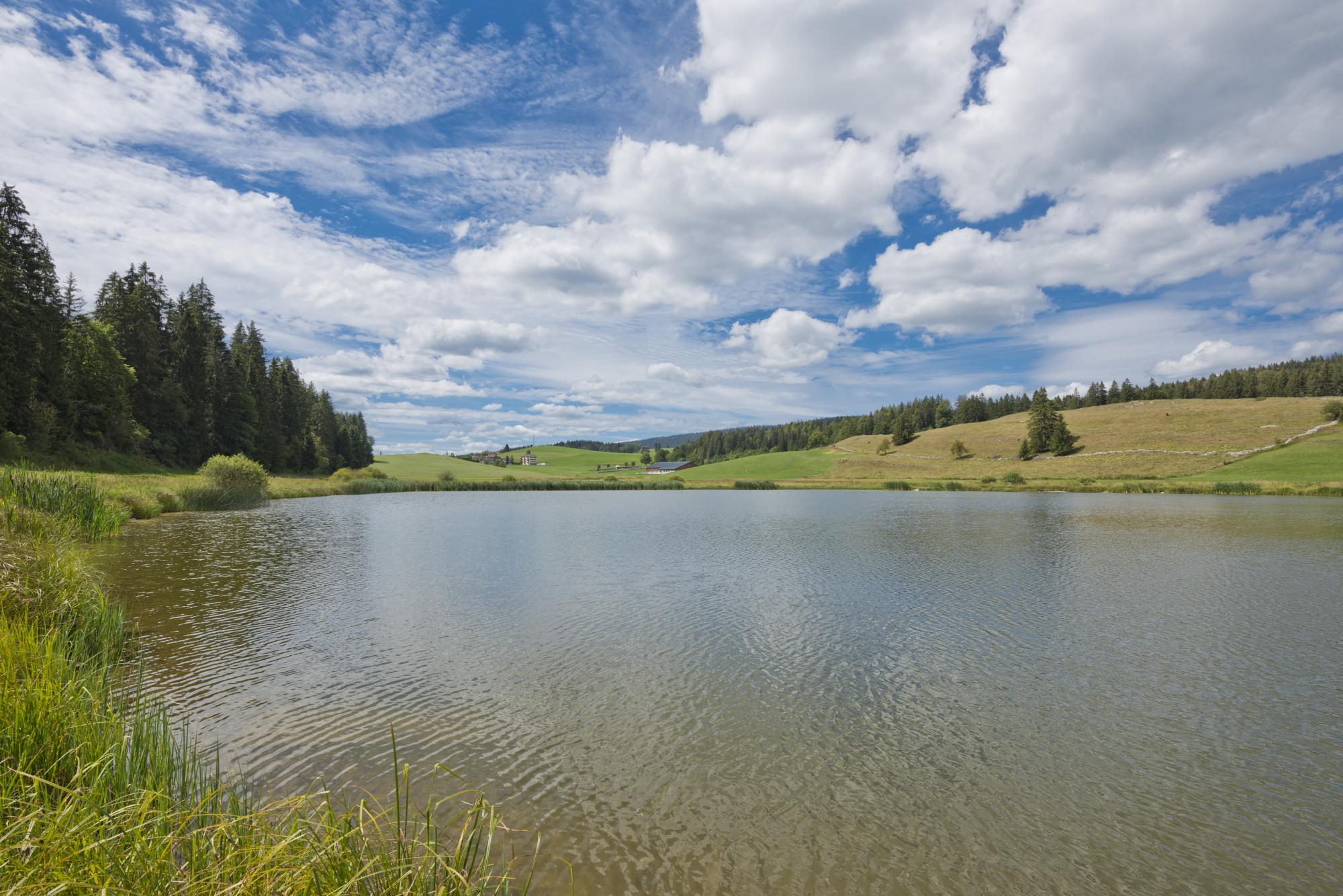
Stephan Engler
Lac Ter
Located to the east of the village Le Lieu, Lac Ter is fed by two streams: the Ecluse and the Séchey. It might be suggested that it takes its name from the tint of its waters which often prevents us from seeing its substance but the truth is that no one is certain of its etymology.
In summer, Lac Ter seduces by its long banks of reeds located on the edge of the shore. It attracts mostly fishermen, who like to wait peacefully that perch, roach fish, gudgeon or pikes bite on the hook.
As Lac de Joux, Lac Ter freezes completely during the very cold winters. In 1900 and 1901, its ice was even exploited and sold. The blocks were transported by sleds to the station of Le Lieu, where they were loaded in wagons. The experiment lasted only two seasons contrary to Lac Brenet, near Lac Ter, where the ice has been successfully exploited for about sixty years.
In summer, Lac Ter seduces by its long banks of reeds located on the edge of the shore. It attracts mostly fishermen, who like to wait peacefully that perch, roach fish, gudgeon or pikes bite on the hook.
As Lac de Joux, Lac Ter freezes completely during the very cold winters. In 1900 and 1901, its ice was even exploited and sold. The blocks were transported by sleds to the station of Le Lieu, where they were loaded in wagons. The experiment lasted only two seasons contrary to Lac Brenet, near Lac Ter, where the ice has been successfully exploited for about sixty years.

